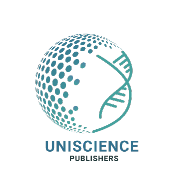In this paper, we observe a comprehensive simulation approach for organic/inorganic perovskite absorber layer (PAL)-based photovoltaic solar cell under the preconditioned illumination of AM1.5 for distinct device structures. The predominant objective of this work is to investigate the optimization of thickness parameters of the lead-free PAL active layer attached to the device structures to attain the best possible efficiency for the lead-free PAL, i.e., MASnI3-based PSC. The present simulation accomplishes considering green synthesized ZnO as an electron transport layer (ETL) and P3HT as a hole transport layer (HTL), sandwiching the PAL layer of MASnI3 having a precise bandgap of 1.3 eV. Therefore, the extensive investigation of the simulated device structures confirms the optimized thickness of the ETL, MASnI3, and HTL, respectively, as 100 nm, 600 nm, and 100 nm for the device structure. Optimizing layer thickness using green synthesized ZnO yields a much-improved power conversion efficiency (PCE) approaching 22% owing to enhanced Jsc, enriching the earlier reported value of Bhattarai et al. (2022)PSC devices.
Keywords : perovskite absorber layer (PAL), MASnI3, electron transport layer (ETL), power conversion efficiency (PCE).













